Samsung 28.2 cu. ft. French Door Refrigerator in Black Stainless Steel
Large 28 cu. ft. capacity with new, redesigned interior fits more. Modern Design and Clean lines blend beautifully into your kitchen. Fingerprint Resistant Finish withstands everyday smudging.
Samsung’s 28 cu. ft. large capacity 3-Door French Door refrigerator is beautifully designed, with sleek-edge doors, and EZ open handles. The clean lines and modern form blend beautifully into your kitchen while the fingerprint resistant finish withstands everyday smudges.
-
Large Capacity – A completely redesigned interior with 28 cu. ft. capacity that fits 10% more groceries, when compared to Samsung 3-Door model RF260BEAE with 25.5 cu. ft capacity
- Modern Design – Clean lines and modern form blend beautifully into your kitchen
- Fingerprint Resistant Finish – A finish that withstands everyday smudges, so you spend less time cleaning
- All-Around Cooling – Multi-vent technology keeps items on every shelf evenly cooled
- Large capacity ice maker, stores up to 5.5 lbs. of ice
- Full-Width Drawer – Large drawer space for storing party platters, deli items, beverages and more
- High-Efficiency LED Lighting – LED lighting designed to beautifully light up the interior of your fridge so you can quickly spot what you want
- EZ-Open Handle – Specially designed handle allows for easy opening and closing of a fully loaded freezer. Automatically slides out for easy access, organization and storage
- ENERGY STAR Certified – Eco-friendly and energy-efficient Visit www.energstar.gov for more information on Energy Star guidelines
- Accessibility (ADA Compliant) – Easy to reach controls for everyone
- Adjustable Shelving – Middle shelf can be easily adjusted to fit taller items
- Sabbath Mode – Adjusts your refrigerator to meet requirements of certain religious laws for holidays and days of rest
Additional information
| Depth (Excluding Handles) | 32.8 |
|---|---|
| Depth (Including Handles) | 35.4 |
| Depth (Less Door) | 28.8 |
| Depth With Door Open 90 Degrees (In) | 47.2 |
| Height to Top of Door Hinge (in.) | 70 |
| Height to Top of Refrigerator (in.) | 68.8 |
| Product Depth x Height x Width (in.) | 35.4 x 70 x 35.75 |
| Refrigerator Width (In.) | 35.75 |
| Certifications and Listings | ADA Compliant,Energy Star,UL Listed |
| Manufacturer Warranty | Five (5) years Parts and Labor on sealed Refrigeration system only* Ten (10) years Part and Five (5) years Labor on Digital Inverter Compressor (*Compressor, evaporator, condenser, drier, connecting tubing) |

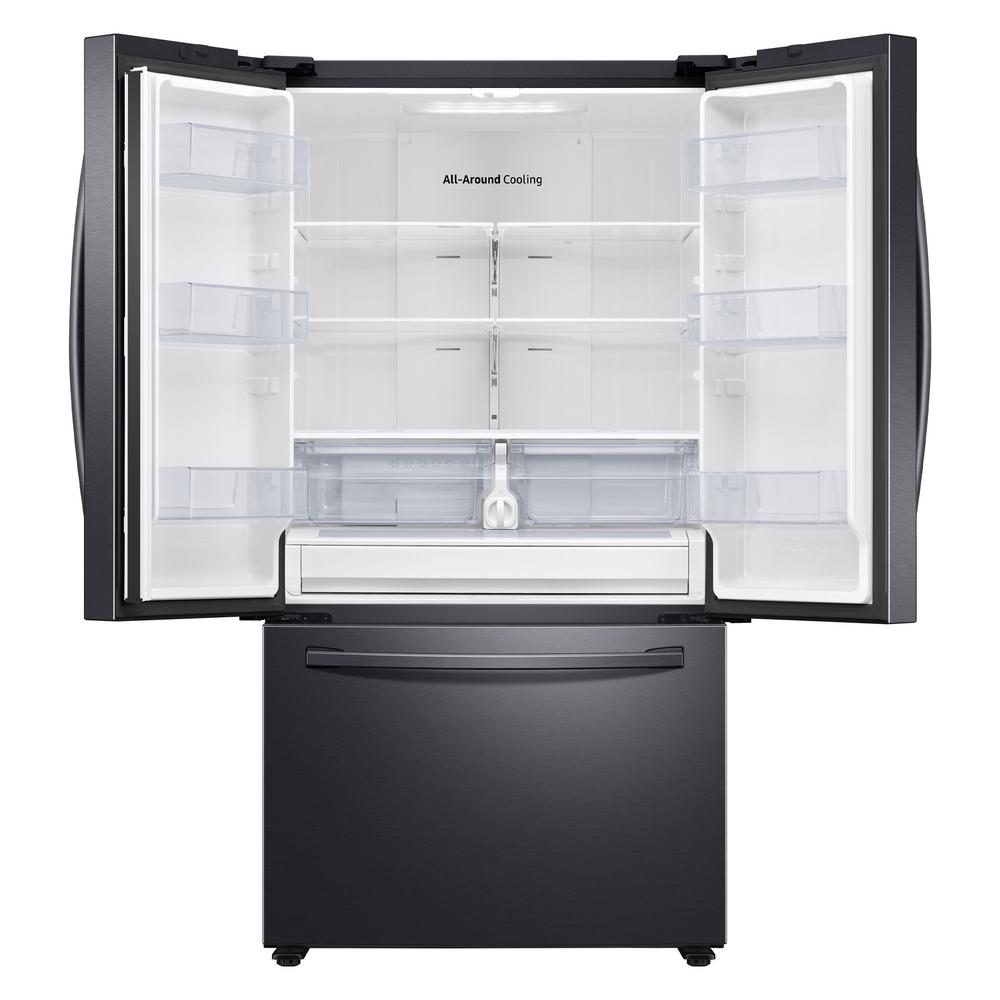
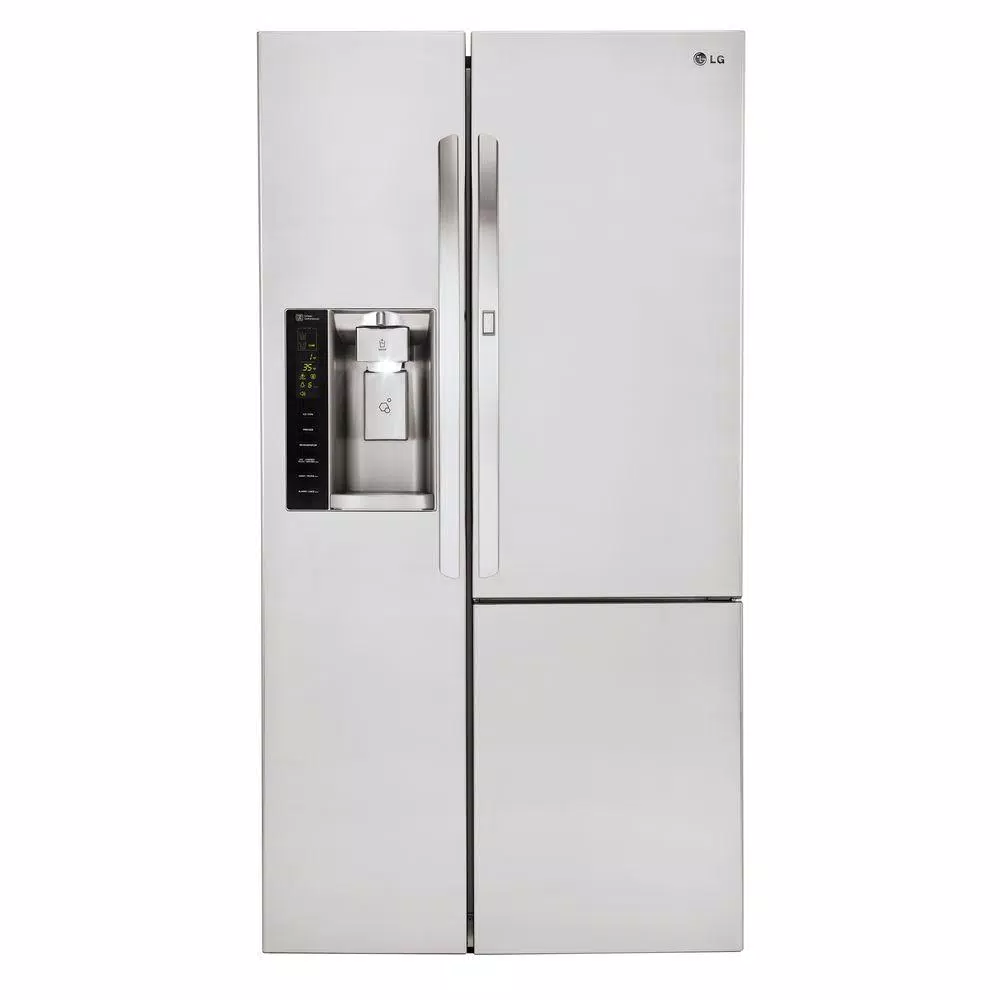
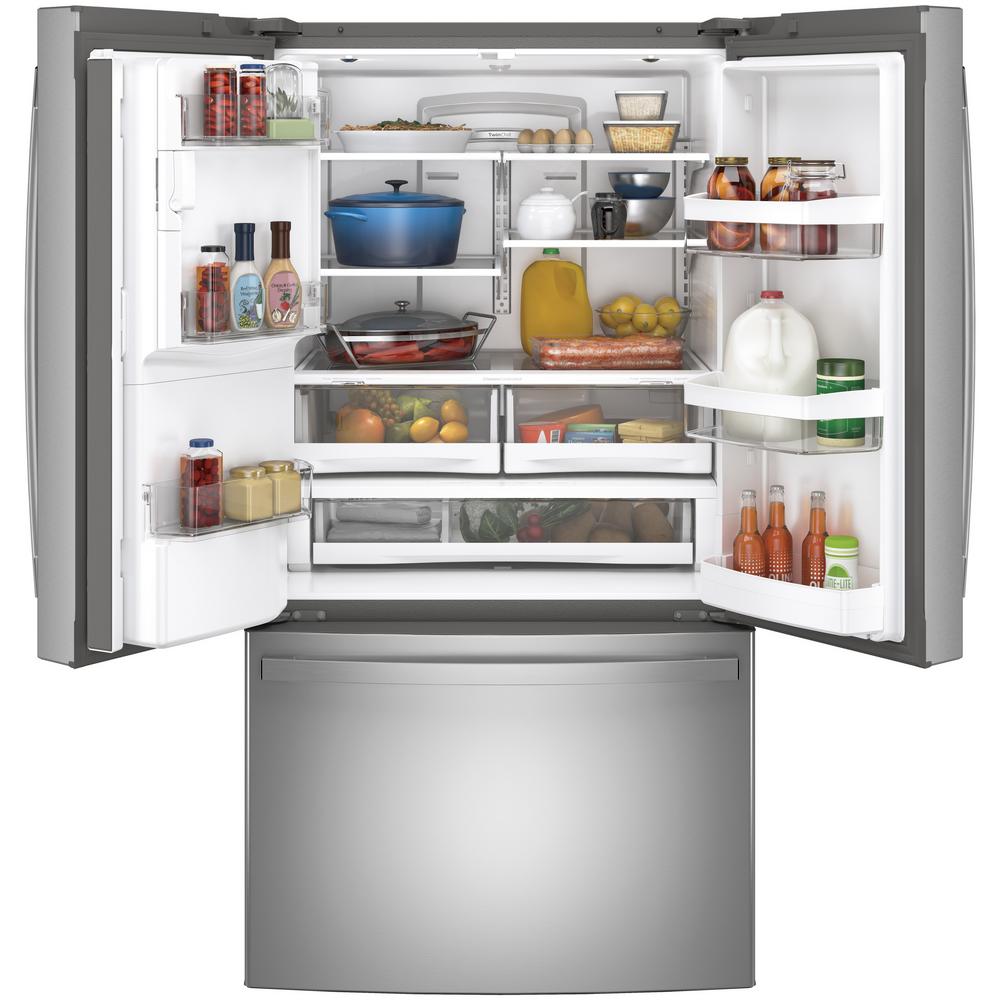
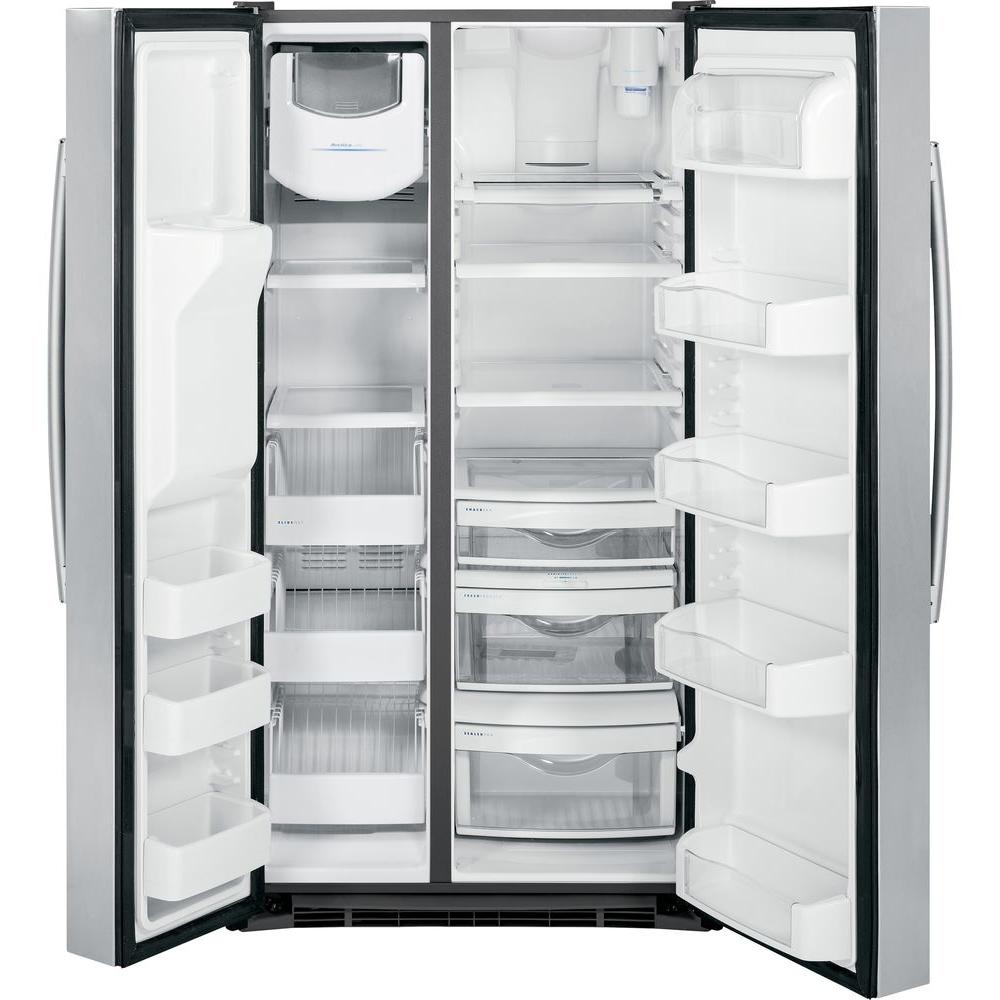
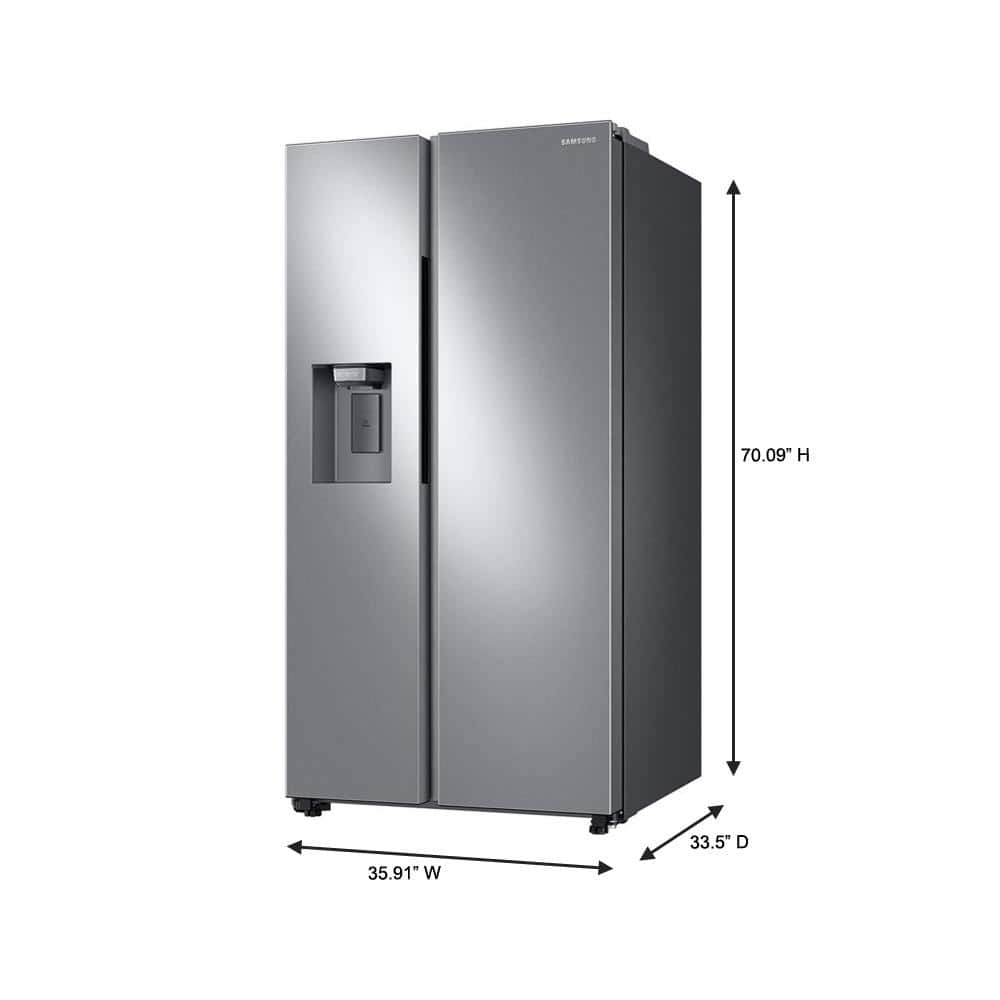
by Geeorge
[This review was collected as part of a promotion.] i’ve had this fridge for over a month now and so far i have been enjoying it a whole lot more than my last fridge. this refrigerator is quite large and has a ton of space to put food in. the top, has the most space and has plenty of shelves and some drawers to store food. the freezer is on the bottom and has less room, but still sufficient for lots of frozen goods. there are two drawers that pull out. the top one has an ice maker that does take up a lot of room and is a bit awkward. occasionally the top drawer doesn’t come out when i open the door, but i can pull it out easily when it happens. other than that, there have been no other issues. the doors feel solid and close tightly. this fridge doesn’t have a ton of fancy features, but that’s okay because it does what i want well.
by Nano
Got the delivery it worked awesome looks nice stylish and so much room in there cooled up quick and has been wonderful fridge inside has so many compartment my wife was so exited the color so just stand out so much ice maker works nice my personnel tip to anyone check your GFC outlets love it 🙂 the finger print resistance is nice doesn’t leave any marks especially if you have kids lighting is nice and bright and very visible of what’s inside the fridge overall satisfied with the outcome of are new fridge 🙂
Was this helpful?
by Mike
I am very happy with my new Samsung refrigerator. From the black stainless exterior that modernizes my kitchen to the led interior lights that allow me to see all my food, I am impressed. The ice maker produces an ample amount of ice and doesn’t clump when sitting in the tray. The interior tub of the freezer is plastic but is sturdy. The upper drawer with the ice tray slides back and forth with ease allowing access to the food below. The refrigerator part is bright and easy to wipe clean. The door trays are easily adjustable and hold large jars and containers of milk. Loving the new black stainless Samsung refrigerator. I received the Samsung refrigerator at a discounted price in exchange for my honest review.
by Clay
We love our new fridge! I love to cook and coming from an Italian family, I cook for an army! Lol! Previously we had a conventional fridge and there was never enough room for leftovers. Not with this fridge, it is huge! Plenty of room in doors for everything from condiments to 2 litter bottles of soda. Freezer is so deep and spacious! With Thanksgiving coming up there is enough room for our 23lb turkey and our ham without having to worry about no room for everything else! I’ve found 2 small issues. First the pantry drawer does not always close evenly. Not a big deal just something I noticed. The other issue could be a problem if not noticed. The left side door has a middle section that seals the 2 doors when closed. If there is to much weight on shelves in this door the latch does not always close. Leaving an opening when doors are closed. To fix this I used one of the door leveling clips that come with fridge. Since I used that no more issues with it closing! I highly recommend this fridge to everyone!